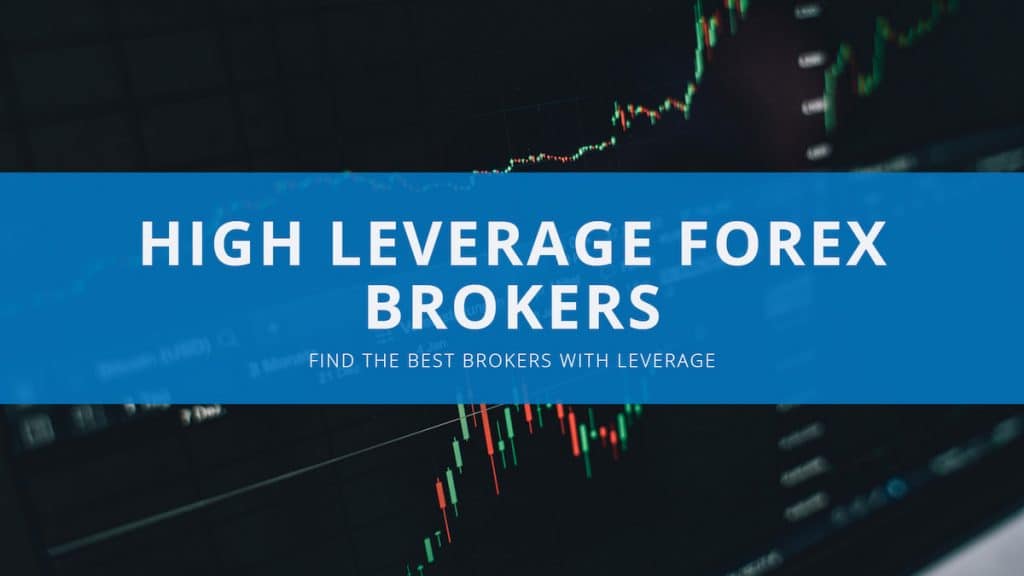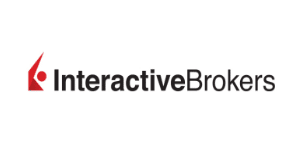In our guide, we will go over high-leverage forex brokers available. Brokers are ranked based on various factors, including leverage, trading platforms, security, fees, advanced trading tools, risk management tools, reliability, and more features enabling users to trade forex successfully.
Table of Contents
- Top Rated High Leverage Brokers
- List of High Leverage Forex Trading Platforms
- 1. Pepperstone
- 2. AvaTrade
- 3. FP Markets
- 4. Interactive Brokers
- 5. FXTM
- 6. Forex.com
- 7. HYCM
- Compare High Leverage Brokers
- How to choose a high leverage broker?
- What is a high leverage broker?
- Restrictions & Specifics In the USA
- FAQ
- Conclusion
Top Rated High Leverage Brokers
Here is a list of our top rated high leverage brokers:
- Pepperstone – Best Overall
- AvaTrade – Best Trading App
- FP Markets – ECN Pricing Broker
- Interactive Brokers – Best Market Access
- FXTM – ZuluTrade Leverage Trading Platform
- Forex.com – Forex Trading Platform with 70+ Currency Pairs
- HYCM – MetaTrader 4 Broker
Runner Up
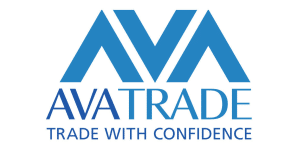
PFI Rating 4.9
71% of retail investor accounts lose money when trading CFDs with this provider.
Best Overall
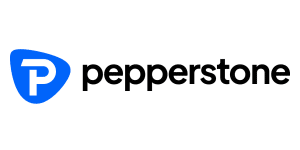
PFI Rating 4.9
Disclaimer: 76.6% of retail investor accounts lose money when trading CFDs with this provider
Low Spreads
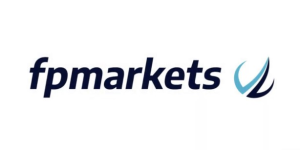
PFI Rating 4.9
69.0% of retail investor accounts lose money when trading CFDs with IBKR.
Currency trading allows investors to use significant leverage to manage sizable holdings with a smaller upfront capital. Leverage ratios typically range from 100:1 to 500:1.
When choosing a broker, it's crucial to consider aspects like regulation, multiple trading platforms, customer support, research, and analytical tools.
In addition to these factors, currency traders should consider the broker's margin requirements and leverage levels. It is important to remember that while traders who access leverage have the opportunity to generate large profits, it also increases the risk of significant losses.
Our guide to high-leverage forex brokers should assist currency traders in selecting a reputable broker and arm them with the knowledge they need to make wise choices regarding their forex trading.
List of High Leverage Forex Trading Platforms
We have covered each selection in more detail in preparation for this guide. The leverage limits are based on international market regulators and your country of residence. Leverage differs depending on retail or professional accounts and changes in the asset class.
Let's look at the best in the industry below.
1. Pepperstone
Pepperstone is our top pick as the best high leverage forex broker that provides traders with great leverage levels. US traders get access to 50:1, while traders in ASIC jurisdiction have 500:1 leverage.
Pepperstone is known for its selection of premium third-party trading platforms. This includes MetaTrader and cTrader. Traders get access to a range of helpful trading tools.
CFDs are complex instruments and come with a high risk of losing money rapidly due to leverage. 75.9% of retail investor accounts lose money when trading CFDs with this provider. You should consider whether you understand how CFDs work, and whether you can afford to take the high risk of losing your money.
2. AvaTrade
AvaTrade has built up a solid reputation over the years. It offers traders access to a wide range of 55 different Forex currency pairs and leverage of up to 400:1.
Opening a Forex account through AvaTrade is fast and easy. There are no fees charged for deposits and withdrawals. It offers user-friendly and diverse research and educational tools. Read more in our in-depth review of AvaTrade.
CFDs are complex instruments and come with a high risk of losing money rapidly due to leverage. 71% of retail investor accounts lose money when trading CFDs with this provider. You should consider whether you understand how CFDs work and whether you can afford to take the high risk of losing your money.
3. FP Markets
FP Markets offers its clients leverage of up to 500:1. Its low Forex trading fees make it an ideal choice for many traders.
The account opening and initial deposit processes are quick and efficient. There are many excellent educational tools, such as e-books and demo accounts.
The product portfolio is limited to Forex, CFDs, and cryptocurrencies. This might be limiting for traders wanting a diverse portfolio.
On FP Markets Official Website
4. Interactive Brokers
Interactive Brokers caters well to experienced active traders, with leverage levels of up to 400:1.
Interactive Brokers offers efficient order execution thanks to its IB Smart Routing technology.
Its mobile trading platform is well-supported across all devices. Beginners may find it tricky to use as it is aimed more at experienced, well-versed traders. Interactive Brokers offers the best market access and industry-leading low trading costs.
On Interactive Brokers' Official Website
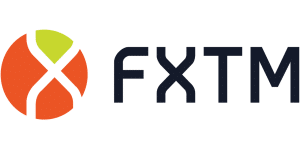
PFI Rating: 4.7/5
5. FXTM
Forex Capital Market (FXTM) is another great option for experienced Forex traders. This broker offers leverage levels ranging from 1:50 to 1:1000. FXTM doesn't limit leverage for micro accounts. Every trader can trade forex majors with 1:1000, forex minors with 1:500, forex exotics with 1:50 leverage, and spot metals with 1:500 leverage.
This brokerage supports several third-party trading platforms, such as ZuluTrade and MetaTrader4. This platform variety gives you access to an abundance of drawing tools and technical indicators.
A downside is the broker’s inactivity fees, which apply if your account is inactive for more than a year.
On FXTM Official Website
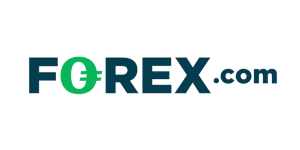
PFI Rating: 4.7/5
6. Forex.com
Over 70 forex pairs to choose from, Forex.com gives US traders 50:1 leverage on major currency pairs. These include EUR/USD, EUR/CAD, and USD/CAD. They are registered with the Commodity Futures Trading Commission (CFTC).
In addition to leveraged trading and a wide range of forex major pairs, Forex.com offers a range of account types to suit different trading styles. This broker offers everything you need, from low Forex fees to technical research tools and, as noted, 50:1 leverage currency pairs.
On the downside, it has a limited range of financial available assets. The desktop trading platform is not user-friendly.
On Forex.com Official Website
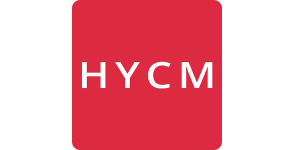
PFI Rating: 4.6/5
7. HYCM
HYCM finishes our list. HYCM offers leverage of up to 500:1. The broker offers excellent market trading conditions and great liquidity.
You can access levels of up to 500:1 through HYCM, depending on where you live and which currency pair you’re trading. Account minimums with HYCM may vary depending on your base currency and the type of account you open; typically, you need $100 to $200 before you open an account.
You can customize your account levels with varying fee structures to fit your risk tolerance and trade frequency. You’ll also find a range of education and research tools.
On HYCM Official Website
Compare High Leverage Brokers
Compare the high leverage trading platforms below:
| High Leverage Broker | Pepperstone | AvaTrade | FP Markets | eToro | Interactive Brokers | FXTM | Forex.com | HYCM |
|---|---|---|---|---|---|---|---|---|
| Leverage | up to 1:400 | up to 1:400 | up to 1:500 | up to 1:30 | 25%-50% Margin | up to 1:30 | up to 1:50 | up to 1:30 |
| Minimum Deposit | $0 | $100 | $100 | $50 - $500 | $0 | $50 | $100 | $100 |
| Deposit Methods | Credit/debit cards, Bank/Wire Transfer, PayPal, Neteller, Skrill, UnionPay | Credit and Debit Cards, Wire Transfer, e-payments | Credit Cards. Debit Cards, Bank Transfer, Ngan Luong, FasaPay, Online Pay, Broker to Broker, Neteller, Skrill, PayTrust, PayPal, Bpay, Poli | PayPal, Skrill, Neteller, Credit Card, Debit Card, Rapid Transfer, iDEAL, Klarna / Sofort Banking, Bank Transfer, Online Banking - Trustly, POLi | Bank Wire, Credit Cards, ACH, Mail a check, Rollover, Online Bill Pay, Trustee-to-Trustee, SEP Contribution | Credit Cards, Debit Cards, e-Wallets, Bank Wire, Local Payment Solutions | Credit Cards, Debit Cards, Wire Transfer | Credit Cards, Debit Cards, Virtual Cards, Wire Transfer |
| Regulation | ASIC, CySEC, FCA, SCB, DFSA, BaFin, CMA | FCA, ASIC, FSCA, FRSA, Israel Securities Authority, Financial Services Agency, Financial Futures Association of Japan | ASIC, CySEC | FCA, CySEC, ASIC, FSAS | SEC, CFTC, FCA, NFA | FCA, CySEC, FSCA, MiFID, FSA, BaFin, AMF, FCMC, AFM | CFTC | FCA, CIMA, CySEC, DFSA |
| Trading Platforms | cTrader, MetaTrader 4, MetaTrader 5, DupliTrade | Proprietary, MetaTrader 4, MetaTrader 5, AvaTrade Go, DupliTrade, ZuluTrade | ||||||
| Assets Offered | CFDs on Forex, Crypto, Shares, Indices, Crypto | Forex, Stocks, Commodities, FXOptions, Cryptocurrencies, Indices, ETFs, Bonds | Forex, Shares, Metals, Commodities, Indices, Cryptocurrency, Bonds, ETFs | Stocks, ETFs, Forex, Crypto, Indices, Commodities | Stocks, ETFs, Options, Futures, Currencies, Cryptocurrencies, US Spot Gold, Bonds, Mutual Funds, Hedge Funds | Forex, Indices, Forex Indices, Commodities, Metals, Stocks | Forex, Shares, Commodities, Cryptocurrencies, Gold and Silver, Indices | Forex, Stocks, Indices, Commodities |
How to choose a high leverage broker?
Here are a few essential things to consider when choosing a broker.
Margin Requirements
In terms of margin requirements and avoiding margin calls, it is essential to choose a broker with leverage limits that suit your trading style. US brokers are limited to 50:1 leverage. International brokers can trade with leverage of up to 500:1 on most major currencies.
Fees and Commissions
You should understand all the fees your broker charges before opening an account. Forex brokers make money either from commissions or spread, or both. We researched Brokers in the forex industry offering the lowest bid-ask spreads or zero spread accounts. Some brokers might offer commission-free trading, but charge spreads and vice-versa.
Account and Trade Minimums
Account minimums vary from broker to broker, while some require no account minimum. The amount needed to initiate a trade will also vary.
Trading Platforms
Many brokers offer clients their trading platform software. Others might offer access to popular platforms like cTrader and MetaTrader4. Make sure you choose a broker with the right trading tools to suit your trading needs.
Leverage Restrictions & Regulation Worldwide
Different countries have different authorities that impose rules, including leverage levels, minimum capital, reporting requirements, and investor protection.
Leverage involves a high potential risk of losing money. Financial jurisdictions and authorities take necessary measures to limit allowed levels. Different authorities have different regulations, so you must check for your specific jurisdiction.
The current maximum for leverage levels in the US is 1:50. At the same time, the European Securities and Markets Authority (ESMA) allows only 1:30 (30 times leverage)for European Traders. In the UK, FCA-regulated brokers cap leverage at 1:30. On the other hand, the Australian Securities and Investments Commission regulator did not restrict regulated brokers levels in the past. In 2021 ASIC imposed leverage caps of 30:1 for major currency pairs and 20:1 for exotic and minor currency pairs.
You should consider your expertise level. If you are a beginner forex trader, you should find a broker with low minimum deposits or use a demo account with virtual funds.
What is a high leverage broker?
A High Leverage Broker is an online broker that allows trading on high leverage, also known as high margin. It allows traders to trade at larger volumes and sizes with lower initial balances.
Usually, active traders and high-volume traders get access to higher leverage.
Margin is the amount of money a trader needs to open a trade. When it comes to leverage in Forex trading, you only need to put forward a percentage of the full value of the position to open a trade.
What is a Leverage Online Trading Platform?
Leverage trading platform refers to the ratio of borrowed capital used to enter a trade. You need less trading capital to open a total position value. It allows you to borrow funds from your broker on margin to open a position.
Leverage levels differ for retail traders and institutional traders. This is due to institutional traders having professional training and a solid risk management strategy, and knowing how to use leverage. Further to that, institutional traders have a better understanding of volatility where higher leverages are used to trade low-volatility markets. Again, solid money management is the key point here.
The leverage level offered to a forex trader by a broker is usually shown as a ratio. It shows the particular percentage of the total trade volume that the trader needs.
For example, a 100 times leverage (leverage ratio of 1:100) requires the trader to have 1% of the total trade volume. If you have a trading capital of $100, you can open a leveraged position of $100,000. This won't be possible without substantial capital on a low leverage ratio on a low leverage broker platform.
| Leverage | Margin Needed |
|---|---|
| 50:1 | 2% |
| 100:1 | 1% |
| 200:1 | 0.5% |
| 400:1 | 0.25% |
| 500:1 | 0.2% |
Restrictions & Specifics In the USA
There are strict regulations on Forex trading in the US compared to most other countries. The National Futures Association (NFA) is the financial body that imposes leverage limitations on US forex brokers.
CFD trading is unavailable in the USA due to the CFTC and NFA regulations. US traders spot trade with margin.
Leverage is limited to 1:50, and leveraged products like margin trading on CFDs are illegal. If you have a $1 account balance, you can open a trade with $50.
On the other hand, countries like Australia have no restrictions on leverage. This puts Forex traders in the US at an obvious disadvantage, but many great broker options remain.
FAQ
What is the highest leverage available?
Leverage in Forex trading is often as high as 1:500. Some brokers may even offer leverage of up to 1:1000. It’s important to be aware of the financial risk involved, especially with these leverage levels.
Which is the best leverage in Forex?
The best leverage in Forex is always the level that you feel most comfortable with. If you don’t like high-risk trades, the lower the leverage, the better, such as 1:5. With such risk involved, you need to be confident in any aggressive trading strategies.
How do high leverage brokers make money?
Brokers make money by providing their clients with access to the foreign exchange market. They charge a commission on each trade that their clients make, and they also make money from the spread between the bid and ask prices.
How do high leverage brokers hedge their risk?
Forex brokers typically hedge their risk by taking offsetting positions in the underlying currency pairs. For example, if a broker has a client who is long EUR/USD, the broker may take a short position in EUR/USD to offset the risk. Alternatively, the broker may take a long position in USD/JPY to offset the risk.
Where do high leverage forex brokers get their liquidity?
The vast majority of forex brokers get their liquidity from large banks. These banks provide the brokers access to the interbank market, where the banks trade with one another. The banks that provide this liquidity to forex brokers are typically called “prime brokers”. The interbank market is the largest and most liquid market in the world, with a daily turnover of over $5 trillion.
Conclusion
In compiling this comprehensive guide, we have thoroughly compared the top high-leverage brokers available in the forex market through 2023.
Making the best platform choice for your trading needs is a significant decision, and you must carefully weigh a number of important factors before deciding. No two platforms are created equal, and traders have different sets of strategies, approaches, and budgets at play, so it is important to look at each one carefully before making a decision.
You should consider other essential aspects, other than only the maximum leverage limits, such as costs, supported markets, client service, regulation, and your trading strategy. These factors are crucial in figuring out whether a broker is generally suitable for your particular trading needs and objectives.
After a detailed analysis, we are pleased to announce that Pepperstone stands out as the overall best high-leverage broker. With its user-friendly interface and a focus on providing exceptional customer support, Pepperstone is the ideal choice for novice and experienced traders alike.
In conclusion, it's critical to consider all factors and make an informed choice based on your unique needs and goals when selecting a broker. With a comprehensive bundle of tools and advantages to enhance your trading performance, Pepperstone is the finest overall alternative, according to our analysis of the top choices.
